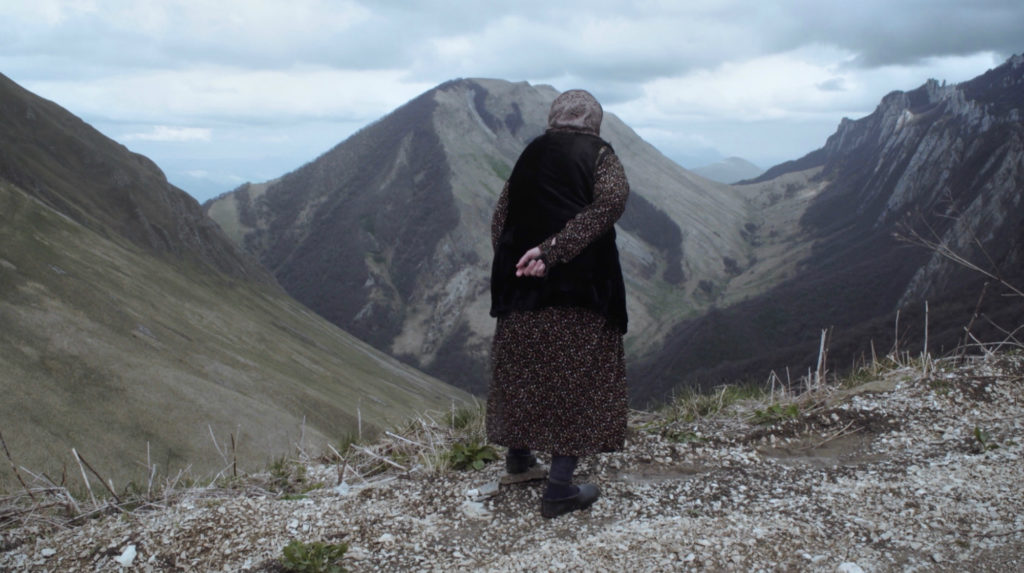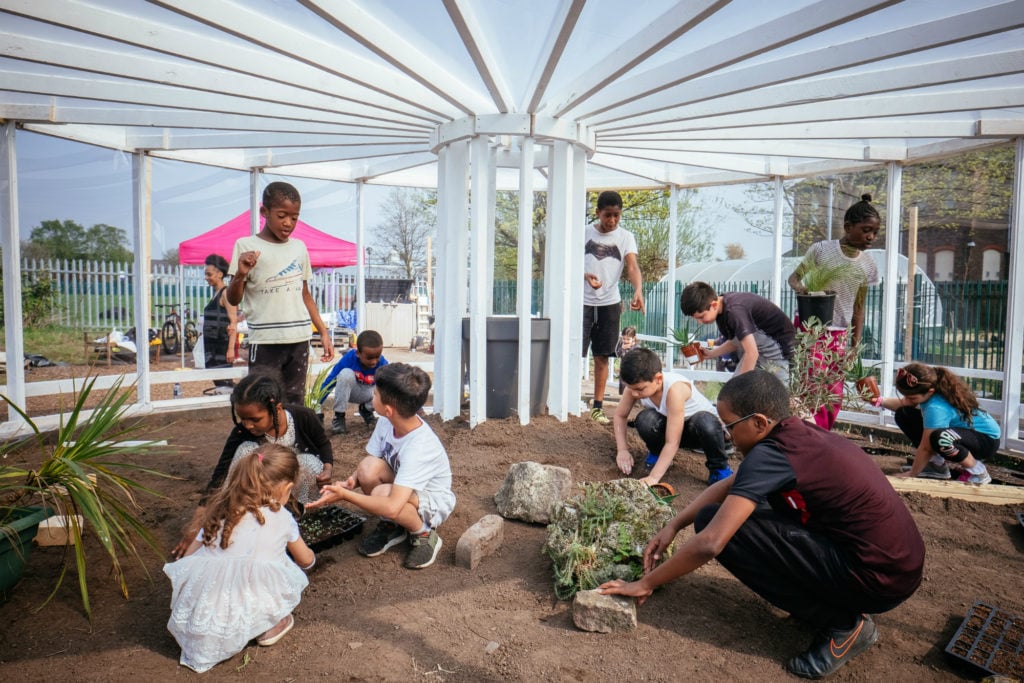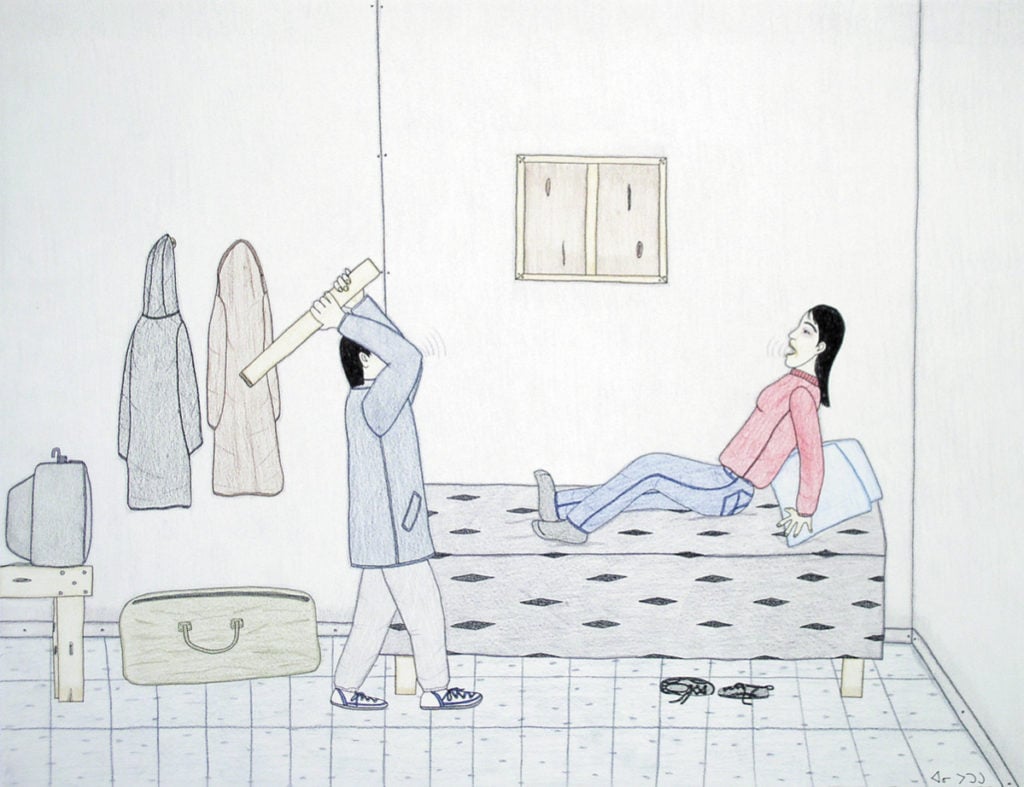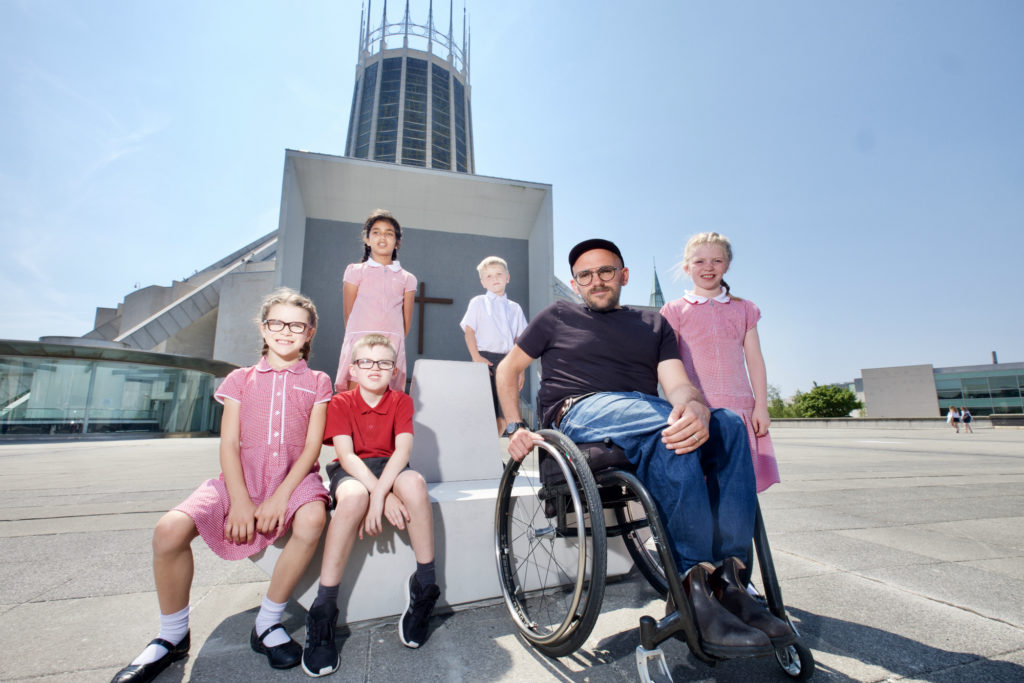Art & Exhibitions
Who Said Art Was Fun? This Year’s Liverpool Biennial Is a Tearjerking Journey Through Europe’s Dark, Violent Past
The largest art exhibition in the UK explores the scars left by Europe's past—and offers a tentative look forward.

The largest art exhibition in the UK explores the scars left by Europe's past—and offers a tentative look forward.

Hettie Judah

An overwhelming spirit of retrospection—rather than nostalgia—permeates the 10th edition of the Liverpool Biennial, the UK’s largest visual art festival. For an exhibition with the title, “Beautiful world, where are you?” this was perhaps inevitable. But rather than a wistful glance back from a chaotic, stressful, and dangerous present, many of this biennial’s more than 40 thoroughly international participants have elected to ram home just how bad the supposed good ol’ days really were.
Two works by the young Chechen-born artist Aslan Gaisumov—a star in the ascendant—address the human cost of the Soviet deportation of Chechen and Ingush people to Central Asia in 1944. In People of No Consequence (2016), we watch all the remaining survivors of that deportation assemble for the first time. Broken men in felt boots and high astrakhan hats, they look like characters that have stepped out of history. And, indeed, they are: They are living links to Stalin and Beria’s brutal enforced “transfer” of non-Russian Soviet ethnic minorities toward the end of the World War II.
In the companion video Keicheyuhea (2017), the artist drives his grandmother back to her mountainous homeland. As they ascend sheer dirt tracks, she reels off a list of the dead, including her youngest sister who died of starvation during the deportation. The landscape is extraordinary—dramatic, beautiful, wild—and so etched in her memory from young girlhood that she can still describe their routine for tending livestock 74 years later. This brief, late return brings heartache—but also sweetness—beyond tears.

Mohamed Bourouissa, Resilience Garden (2018). Granby Gardening Club, April 2018. Photo by Pete Carr.
This is not the only work in which memory looms large. In The Whispering of Ghosts, a video that formed part of Mohamed Bourouissa’s multifaceted contribution to the biennial, the artist interviews an elderly patient from the Blida-Joinville Psychiatric Hospital in Algeria, the facility at which philosopher Frantz Fanon observed and treated the psychological wounds inflicted by colonialism. This patient had built a garden on the hospital grounds as occupational therapy, and with him, Bourouissa sets out to design a new garden for Liverpool. During the interview, the patient describes episodes of the torture her suffered at the hands of the French. “Did they electrocute you through your balls?” asks Bourouissa. “Oh yes, and through my ears too,” replies the patient.
In his 1961 book The Wretched of the Earth, Fanon describes Europe as a “tower of opulence” that was founded on the “diamonds and oil, silk and cotton, wood and exotic products” that flowed into it from plundered continents over centuries. “Europe is literally the creation of the third world,” he writes.
Fanon named Liverpool as one of the mighty European ports that “were specialized in the Negro slave trade, and owe their renown to millions of deported slaves.” This, then, is the long historic context in which Bourouissa brings a garden designed by Fanon’s patient in North Africa to be constructed as a community project on Granby Street in Liverpool.
Yet this older narrative of colonization and complicity has been occluded. As Bourouissa walks down a street, a hostile man off screen shouts: “Why aren’t you in Algeria helping your own people? The Muslims are the richest people around here.”
Placing international art in the public realm these days is fraught. On Great George Street, Istanbul-based artist Banu Cennetoğlu installed The List, a work detailing the deaths of 34,000 migrants and refugees in or on the borders of Europe since 1993. Printed on posters showing names, places of origin, and death, The List stretches for hundreds of meters down the street. Already by the day of the biennial’s public opening on July 14, sections had been ripped off the wall.
Not all the retrospection was melancholic, however. Agnès Varda’s Ulysse (1982) looks back at the circumstances surrounding the creation of a photograph she took in 1954. In it, a young man and boy, both naked, are seen on a pebble beach. In the foreground lies a dead goat, its stomach distended. Staged using regular models—a young Egyptian man and her neighbors’ son, the eponymous Ulysse—Varda asks what impact the taking of the photograph had on its subjects, how it might have contributed to the formation of memories, and what the man and boy recognize in the photograph’s younger versions of themselves.
At Tate Liverpool, Kevin Beasley’s Your face is/ is not enough (2016) repurposes symbols of oppression—gas masks and bullhorns—taking them as the sculptural basis for monster heads constructed from found debris, garments, feathers, and foam. These arrived in the gallery worn by local performers who built up a warped, droning chorus in their alien garb before removing the masks and presenting their human faces.

Annie Pootoogook, Man Abusing His Partner (2002). Collection of John and Joyce Price. Image courtesy Feheley Fine Arts.
Beasley’s work stands amid displays that explore the representation of First Peoples: “Feather” headdresses carved from Nike trainers by Brian Jungen, who is based in British Columbia; a wall painting by Dale Harding inspired by Australian rock art made using Reckitt’s Blue, a laundry whitener produced in Liverpool and exported to Africa and Australia; and a room full of bittersweet drawings by Annie Pootoogook, who is Canadian Inuk, describing modern Inuit life, from family gatherings to watching porn to domestic violence.

Ryan Gander with Jamie Clark, Phoebe Edwards, Tianna Mehta, Maisie Williams, and Joshua Yates, From five minds of great vision (The Metropolitan Cathedral of Christ the King disassembled and reassembled to conjure resting places in the public realm) (2018). Photo by Rob Battersby.
So—are we having fun yet? Beautiful world, where are you? isn’t exactly brimful of jollies. But there are sparks of humor and even optimism. The Turkish artist Inci Eviner’s new film work Reenactment of Heaven offers up an all-female Garden of Earthly Delights. Two nimble dancers appear as tiny creatures performing in jittery looped animations within Eviner’s ink paintings, above which rolls a stately day-to-night panorama of Istanbul.
Meanwhile, Ryan Gander’s project with the local Knotty Ash Primary School is accompanied by the film Reading Without Stigma, in which five children are asked to read non-verbal documents. These include photographs and a book printed by Gander in which blobby pebble shapes take the place of letters. “Peanuts and eyebrows: That’s what I like,” reads one little boy, diligently.
Somewhat out on a (design) limb, Hack the Root at the RIBA North architecture center presents architectural scientist Mae-ling Lokko’s biodegradable building materials grown using agricultural waste and mycelium fungus. In the middle of a small pavilion made of prefab mycelium components, new panels grow inside custom trays. Lokko already has production facilities in New York State and Ghana—this stuff, seemingly science fiction, is out there in the real world.
While Lokko, Gander, and Evener’s works differ radically, all are distinguished by their resistance to retrospection. Instead, they look to the future, and to the possibility of constructing a more beautiful world, even if just as a daffy fantasy.
“Beautiful world, where are you? Liverpool Biennial 2018” runs from July 14 through October 28 at various venues in Liverpool. It is co-organized by the biennial’s director Sally Tallant and Kitty Scott, the curator of modern and contemporary Art at the Art Gallery of Ontario.